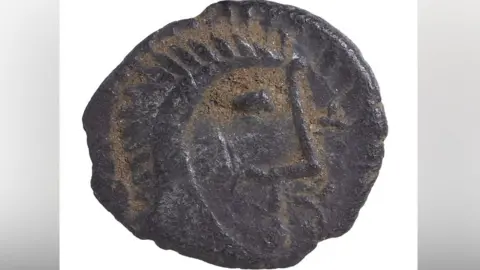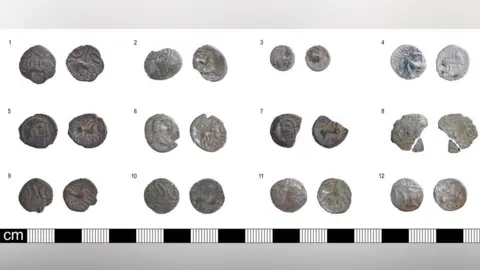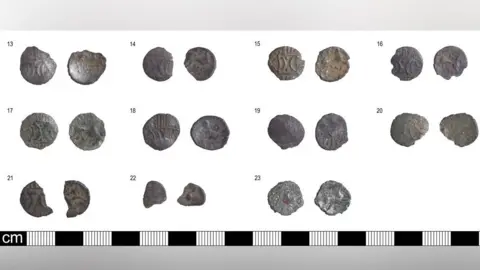Silver coins hidden during Boudicca's revolt found
 Andrew Williams/Norfolk County Council
Andrew Williams/Norfolk County CouncilA hoard of Iron Age silver coins hidden during Boudicca's revolt against the Romans has been discovered by a metal detectorist.
The 23 coins were unearthed near Raynham, Norfolk, and date to the late Iceni period and some depict the "Norfolk god type - a man with crazy hair".
Coin expert Adrian Marsden said: "There was a lot of fear and unease during Boudicca's revolt and those were the perfect conditions for burying your hoard."
The hoard was reported to the Portable Antiquities Scheme and is subject to a coroner's inquest.
 Getty Images
Getty ImagesIceni queen Boudicca led a failed revolt against the Roman invaders in about AD60 to 61 and late Iceni hoards are believed to be linked to the unrest.
Dr Marsden, from the Norfolk Historic Environment Service, said: "It's a fairly standard sort of hoard of Iceni silver units in three types and the majority are of the later series.
"And some feature the so-called Norfolk god type - a man with crazy hair."
His name is unknown, but the Romans were happy to assimilate local gods with their own and this is what seems to have happened to this particular deity.
 Andrew Williams/Norfolk County Council
Andrew Williams/Norfolk County Council"I think the Romans equated him to their god of the countryside Faunas - better known as the Greek god Pan - a man with goat legs," said Dr Marsden.
"We know the local Romano-Brits were worshiping Faunus 450 years later and my hunch is the Norfolk god doesn't go under completely and is assimilated with one of the Roman gods."
Without contemporary Celtic records, experts like Dr Marsden have to look back using Roman records and finds.
But a well-known example of Roman assimilation can be seen at the temple of Sulis-Minerva in Bath, where the Celtic goddess Sulis was conflated with the Rome's Minerva.
A museum hopes to acquire the hoard.
 Andrew Williams/Norfolk County Council
Andrew Williams/Norfolk County CouncilFollow Norfolk news on BBC Sounds, Facebook, Instagram and X.
